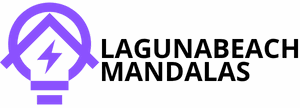Navigating the world of home buying can feel like trying to solve a Rubik’s Cube blindfolded, especially when you’re on a tight budget. But fear not! Low income mortgage options are here to save the day and help turn that dream of homeownership into a reality. With a little know-how and the right resources, even the most budget-conscious buyers can find a path to their own front door.
Table of Contents
ToggleUnderstanding Low Income Mortgage Options
Low income mortgage options provide pathways for individuals and families facing financial constraints to secure homeownership. Various programs cater to specific needs and situations, offering flexibility and support. Federal Housing Administration (FHA) loans require lower down payments and cater to those with lower credit scores. VA loans serve veterans and military families, providing favorable terms without the need for a down payment.
Additionally, USDA loans focus on rural homebuyers, promoting housing in less populated areas. Income restrictions are in place for eligibility, ensuring assistance reaches those in need. State and local housing authorities often offer first-time homebuyer programs, further expanding options available to low-income buyers.
Interest rates on these loans tend to be more favorable compared to traditional mortgages. This occurs because many are backed by government entities, minimizing lender risk. Consequently, lower monthly payments become attainable for budget-conscious buyers.
Finding the right mortgage option involves assessing current financial situations, including income, credit history, and available assets. Researching lenders and comparing their offerings plays a crucial role in identifying suitable choices. Homebuyer education programs exist to equip potential buyers with information about the buying process, ensuring informed decisions.
Networking with housing counselors or local nonprofits can also yield valuable insights into available resources. Programs often change, and staying updated on eligibility requirements may improve chances of approval. Understanding these low income mortgage options opens doors to achieving the goal of homeownership.
Types of Low Income Mortgage Options

Low income mortgage options include various programs designed to assist those with limited financial resources in obtaining homeownership. Familiarizing oneself with these options enhances the opportunity for achieving this goal.
FHA Loans
FHA loans, backed by the Federal Housing Administration, cater to individuals with lower credit scores. These loans require a down payment as low as 3.5%, making them accessible for budget-conscious buyers. The loan limits vary by region, and buyers often benefit from competitive interest rates. Lenders typically favor FHA loans due to their reduced risk. Additionally, mortgage insurance premiums apply, but these can be rolled into the loan. Borrowers gain the advantage of flexible qualification requirements, easing the overall process of securing funding.
USDA Loans
USDA loans provide significant assistance to rural homebuyers with low to moderate incomes. These loans require no down payment, which alleviates a substantial financial burden. Eligible properties must be located in designated rural areas, and household income must not exceed 115% of the median income for the area. Competitive interest rates are available, contributing to affordable monthly payments. Borrowers also enjoy the benefit of lower mortgage insurance costs compared to FHA options. The USDA’s commitment to promoting homeownership in rural regions helps many families achieve their dream of owning a home.
Benefits of Low Income Mortgage Options
Low income mortgage options provide significant advantages for homebuyers on a budget. These options facilitate homeownership while addressing financial constraints.
Affordability
Affordability stands as a primary benefit of low income mortgage options. FHA loans require down payments as low as 3.5%, allowing buyers to invest minimal amounts upfront. Reduced interest rates further enhance monthly affordability, making payments manageable. USDA loans, for instance, require no down payment, significantly lowering initial costs. These options contribute to overall financial stability for individuals and families. Programs tailored for low income buyers help ensure that housing becomes a feasible investment rather than a financial burden.
Accessibility
Accessibility marks another crucial benefit of low income mortgage options. Various programs, like FHA and VA loans, simplify the application process for those facing financial hurdles. Specific criteria designed for lower-income applicants increase approval chances, making homeownership achievable. Resources such as housing counselors and homebuyer education programs provide essential guidance throughout this journey. Federal and state initiatives actively support low income buyers, promoting equitable access to homeownership opportunities. Accessibility measures enable more individuals and families to realize their dreams of owning a home, leading to improved community stability.
Challenges of Low Income Mortgage Options
Navigating low income mortgage options presents unique challenges. Buyers often encounter hurdles that complicate the path to homeownership.
Credit Score Requirements
Credit score requirements frequently impose significant barriers. Many lenders demand a minimum score, typically around 580 for FHA loans. Individuals with lower scores face difficulties securing traditional financing. They may need to seek specialized programs or lenders that cater to lower credit profiles. Understanding how credit scores affect loan eligibility remains crucial for potential buyers. The possibility exists to improve scores through timely bill payments or reducing debt before applying.
Down Payment Assistance
Down payment assistance programs can alleviate financial pressure for low-income borrowers. Various local and state initiatives offer grants or loans to cover down payments. Buyers may find options that do not require repayment if they meet specific conditions. Some programs provide assistance ranging from 3% to 5% of the home purchase price. Researching these opportunities increases the likelihood of achieving homeownership. Networking with housing counselors can also uncover additional resources and guidelines for qualifying.
Low income mortgage options offer a lifeline for those striving for homeownership despite financial constraints. By understanding available resources and programs, potential buyers can navigate the complexities of the housing market more effectively. With options like FHA, USDA, and VA loans, individuals can find pathways that suit their unique situations.
It’s crucial to take proactive steps, such as improving credit scores and exploring down payment assistance programs. By leveraging these tools and seeking guidance from housing counselors, aspiring homeowners can enhance their chances of approval. Ultimately, with determination and the right support, achieving the dream of homeownership is within reach for many.




